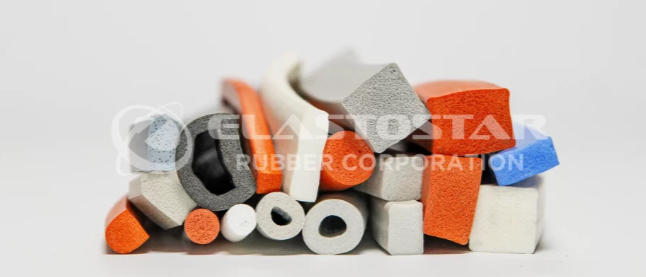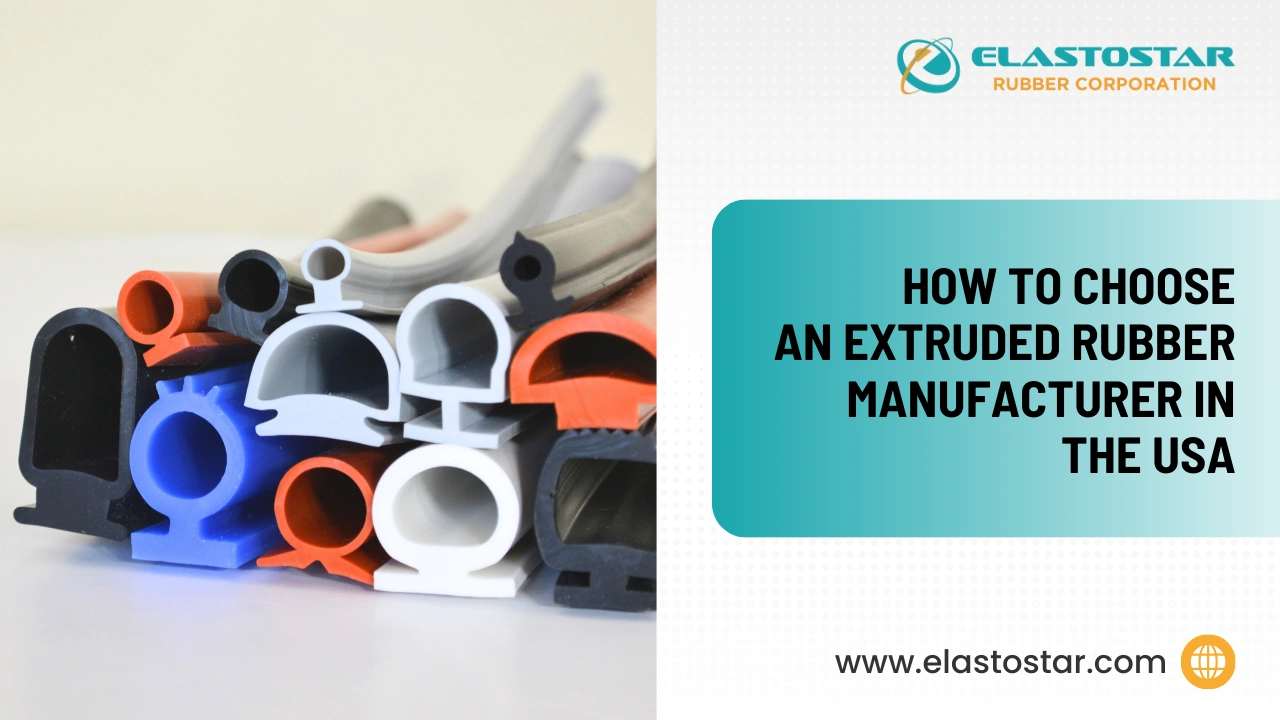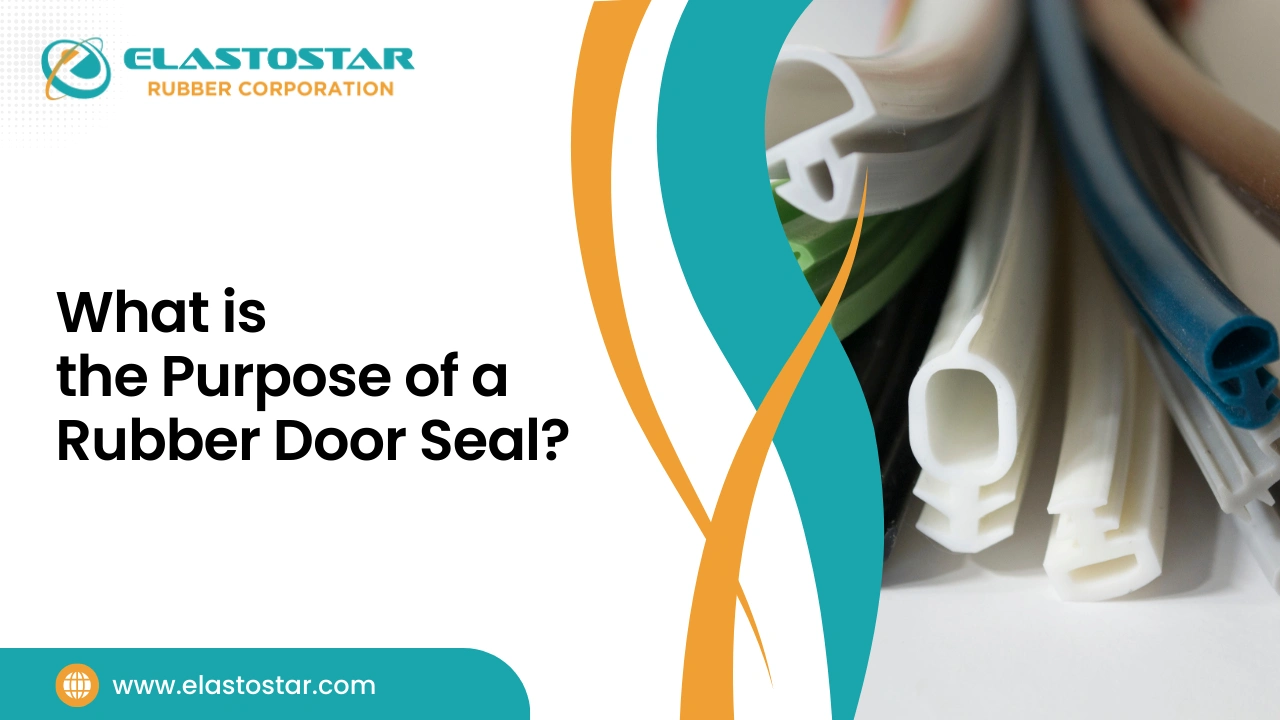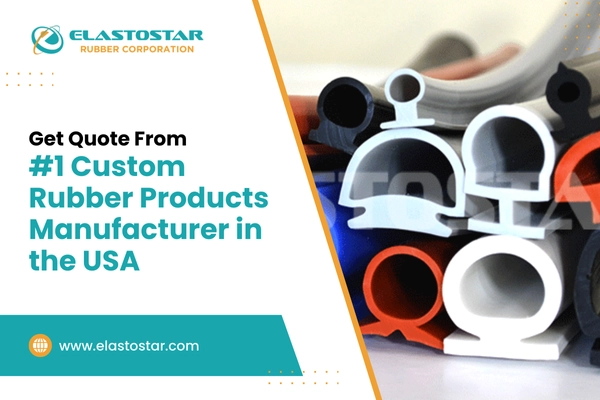Silicone materials are used in everything from electronics and automotive parts to food-grade and medical products. Understanding the differences between key materials becomes important as the global demand for silicone products grows, projected to exceed $25 billion by 2027. Two widely used forms are silicone resin and silicone rubber. Though they share a similar base, they perform differently in real-world applications.
In this blog, we’ll explore how these materials compare in structure, flexibility, and use. At Elastostar, a leading silicone product manufacturer, we focus on rubber-based solutions for industries that rely on dependable rubber and silicone performance.
What Is Silicone Resin?
Silicone resin is a thermosetting material made from a siloxane backbone (Si-O-Si) combined with organic functional groups. Unlike elastomers, it forms a hard, brittle finish once cured. This makes it ideal for coatings, electrical insulation, and high-heat applications.
Often referred to as a hard silicone, silicone resin is known for its thermal stability, water repellency, and excellent surface adhesion. Though sometimes confused with flexible materials, resin rubber behaves more like plastic than rubber. Rubber and resin are often used to compare flexibility versus rigidity, where silicone resin falls on the rigid side.
What Is Silicone Rubber?

Silicone rubber seals are flexible, durable elastomers made from a siloxane backbone, similar to silicone resin, but with added fillers and crosslinking agents that give them elastic, rubber-like properties. Unlike rigid resins, silicone tubes can stretch, compress, and return to shape, ideal for high-performance sealing and insulation.
It is commonly used in gaskets, O-rings, tubing, and rubber profiles, often produced by silicone rubber extrusion manufacturers like Elastostar. Soft variations, such as silicone sponges, offer additional benefits such as a lightweight structure and compression for vibration dampening.
Due to its flexibility, temperature resistance, and chemical stability, silicone rubber is important for automotive, medical, electrical, and industrial applications.
Read More– Silicone Rubber: Where It Comes From
What are the Differences Between Silicone Resin and Silicone Rubber?
It’s important to understand their distinct characteristics when comparing silicone versus silicone rubber. While both are silicone-based, their structure, behavior, and applications vary greatly.
| Feature | Silicone Resin | Silicone Rubber |
| Form | Rigid, brittle | Flexible, elastic |
| Structure | Thermosetting polymer | Crosslinked elastomer |
| Processing | Cured at high temperatures (bake-on) | Molded or extruded, room or heat-cured |
| Flexibility | None – remains hard after curing | High – can stretch and compress |
| Use Case | Coatings, adhesives, electrical insulators | Seals, gaskets, O-rings, silicone tubing |
| Surface Finish | Glossy, plastic-like | Smooth, soft-touch, compressible |
| Common Formats | Powders, flakes, resins | Sheets, tubes, extrusions, sponges |
In short, silicone resin offers rigidity and thermal stability, while silicone rubber gasket delivers flexibility, sealing performance, and mechanical durability.
Comparing the Properties of Silicone Resin vs Silicone Rubber

Understanding their physical properties is critical when choosing between silicone resin and silicone rubber channel.
Below, we have compared these materials to see how they perform in real-world applications, particularly under heat, mechanical stress, and surface-specific requirements.
1. Thermal & Electrical Performance
Silicone resin offers high thermal resistance and excellent electrical insulation for coatings and circuit board encapsulation. However, it remains rigid and brittle under thermal cycling.
Silicone gaskets, especially FDA-approved rubber, perform well across a wide temperature range (-60°C to 230°C) while retaining flexibility.
Its stable insulating properties make it a preferred choice in static and moving electrical environments. This balance of strength and adaptability makes rubber and silicone combinations ideal in many elertrical industrial systems.
2. Flexibility & Mechanical Strength
Silicone resin is classified as hard silicone. Once cured, it does not bend, stretch, or compress and is not meant for load-bearing or dynamic movement.
On the other hand, sponge gaskets are engineered for flexibility. They are commonly used to manufacture custom silicone rings, seals, and gaskets that must endure repeated compression, stretching, or vibration. Their elasticity, tear strength, and durability outperform rigid alternatives in sealing and motion-based components.
3. Surface Texture & Finish
Silicone resin’s finish is typically glossy and smooth but nonflexible, best suited for protective layers or coatings where surface hardness is beneficial.
Sponge rubber has a soft-touch, slightly matte surface that can be customized based on use. It can be extruded into complex shapes of rubber mold seals with textures suited for handling, sealing, or insulation.
What are the Applications of Silicone Resin and Silicone Rubber in Industry?
Silicone resin and silicone rubber serve very different functions across industrial sectors. Their chemical makeup and mechanical behavior determine where and how each material is best used.
1. Silicone Resin
Silicone resin is often used in applications requiring rigid, heat-resistant protection.
- Electronics Coatings: Their excellent thermal stability and insulating properties are ideal for protective coatings on circuit boards and electrical components.
- High-Heat Paints: Used in the industrial and automotive industries that handle extreme temperatures without breaking down or discoloring.
These applications benefit from the resin’s ability to maintain its structure under prolonged exposure to heat and harsh environments.
2. Silicone Gasket Material
Silicone rubber’s flexibility and sealing performance make it a critical material across industries such as:
- Medical and Pharmaceutical: Used in tubing, stoppers, and custom silicone gaskets for biocompatible, sterilizable equipment.
- Food-Grade Applications: Custom rubber gaskets and seals are essential in food processing equipment where FDA compliance and hygiene are critical.
- HVAC Systems: Rubber gasket extrusions and seals are used in ducts and enclosures to manage airflow, moisture, and temperature changes.
- Aerospace and Automotive: Precision custom rubber seals and molded components that handle high pressure and fluctuating temperatures in engines and cabins.
As a trusted silicone seals manufacturer, we support these sectors with durable, industry-compliant solutions that perform reliably over time.
How Is Silicone Resin and Silicone Rubber Manufactured?

While silicone resin and sponge cut share similar chemical roots, the way they are processed and the industries they serve are entirely different. At Elastostar, we focus on flexible rubber-based solutions, not rigid resins.
1. Silicone Resin
Silicone resin is produced through curing and thermal processing. After application as a liquid or powder, it’s heat-cured to form a rigid, nonflexible coating. Once cured, it can’t be reshaped; it is ideal for coatings and insulation but unsuitable for sealing or movement-based parts.
2. Silicone Rubber
Silicone sponge cord, on the other hand, goes through a more dynamic process. We start by mixing the base with additives, then shape it through extrusion into precise rubber extrusion profiles. After forming, we cure the material, also called the process of vulcanization, to ensure strength and elasticity.
As one of the trusted rubber extrusion manufacturers in the U.S., we specialize in custom rubber extrusions built for high performance and durability. Our in-house capabilities allow us to produce everything from small-scale seals to large-scale rubber extrusion profiles — all backed by consistent quality, strict quality control, and short lead times.
Which One Should You Use?
The decision between silicone and rubber materials depends on your application’s performance needs. Silicone resin is a great choice for structural coatings, electrical encapsulation, or rigid finishes. But when flexibility, sealing, or vibration resistance is required, sponge extruded rubber is far superior.
At Elastostar, we specialize in high-performance rubber and silicone products, including custom extrusions, gaskets, and sealing systems customised to meet demanding industrial standards.
Whether you’re comparing rubber or silicone for thermal performance, FDA compliance, or outdoor exposure, we can help you make the right call.
From prototypes to full production runs, our team is here to support you with expert guidance and precision-engineered silicone rubber solutions.
Read More – FDA Silicone Meaning, Properties & Considerations
Elastostar’s Expertise in Silicone Rubber
At Elastostar, we’re a trusted custom seal manufacturer known for precision silicone solutions.
From silicone rubber gasket to advanced rubber seal extrusion, we provide full engineering support, fast production runs, and the shortest lead time delivery in the industry. Our products serve aerospace, pharmaceuticals, food-grade, and industrial markets.
Recognized among top rubber seal manufacturers near me, we prioritize compliance, durability, and long-term performance. All materials meet USP CLVI Section 87 & 88 standards.
Contact us to learn how our custom seals and gaskets can support your next project.
Recommended Reads
- Why FDA-Approved Silicone Rubber is Preferred for Food Industry Gaskets & Seals
- Top Benefits of Using Silicone Rubber in the Aerospace Industry
- Guide: FDA-Approved Silicone Rubber Profiles
Conclusion
Understanding the difference between silicone resin and silicone sponge is key to selecting the right material for your application. While resin offers rigidity and thermal protection, silicone rubber delivers unmatched flexibility, sealing, and durability. At Elastostar, we focus on rubber-based solutions that meet industry-specific demands with precision and performance. Whether you need seals, gaskets, or tubing, our team is here to support your goals. Explore our range of silicone rubber products or download our product brochures for more detailed specifications.
FAQs
What is silicone rubber?
Silicone rubber is a flexible elastomer with excellent heat resistance, chemical stability, and durability. It’s widely used in seals, gaskets, and medical devices.
Explore our full range of silicone rubber products.
What is the difference between silicone and silicon?
Silicon is a chemical element used in electronics. It is also a synthetic material that is flexible, heat-resistant, and ideal for sealing, gaskets, and insulation.
Is silicone stretchy?
Yes, silicone rubber seals is highly elastic. It can stretch, compress, and return to its original shape, perfect for applications such as FDA metal-detectable seals and vibration dampening.
What is the difference between silicone rubber and natural rubber?
Silicone gaskets provides higher heat resistance and chemical stability than natural rubber, making it ideal for high-temperature applications and harsh environments.
Are silicone and rubber the same?
No, silicone is a specific type of rubber known for its high flexibility, temperature resistance, and ability to maintain performance in extreme environments. Elastostar’s custom rubber seals are a great example of silicone’s versatility.
How do I get in touch with Elastostar?
Contact us today for more information on our silicone rubber seals, custom silicone gaskets, or any other products! Our team is ready to help with your next project.




